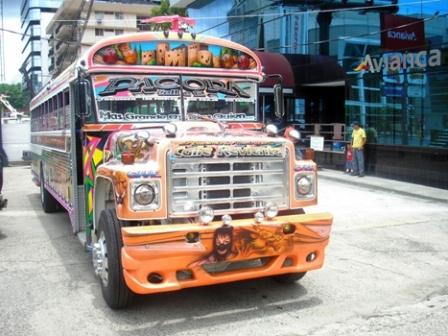MAC, Museo de Arte Contemporáneo ,
Jun 11, 2009 - Aug 09, 2009
Santiago de Chile, Chile
Post-It City: Occasional City
by Cristián Gómez Moya
The category of “project” has been useful for understanding the new approaches to art that for the past few years have been viewing social relations as areas of power, communities as a path towards subversion, public spaces as laboratories and archives as ongoing works. Post-it City: Occasional Cities is a good example in that regard. Conceived as a research project on occupations and the ephemeral, temporary and informal uses of cities worldwide, the project is gaining recognition through a traveling international exhibition in the form of an open archive. Created by Giovanni La Varra, Filippo Poli, Federico Zanfi and Martí Peran in 2005, the project was set up as an on-line working model with diverse collaborators ranging from artists, architects and designers to anthropologists, philosophers and sociologists, all of whom have been working in their own geopolitical contexts. Using various tools stemming from visual ethnography, geo-referential cartography and surveys of quantitative and qualitative data, the groups in the exhibit have focused on researching and stretching the limits between legality, occupations and codes of civility in different cities worldwide. Once project methodologies were agreed upon, the exhibition and a museographic layout was designed and implemented for the first time at the Barcelona Contemporary Culture Center (CCCB) in 2008. The show later embarked on a tour of Latin America including the Museum of Contemporary Art (MAC) in Chile (June-August 2009), the Sao Paulo Cultural Center (September-November 2009) and the La Prensa Cultural Center in Buenos Aires (February-April 2010). As an archive, the project has been based on a stock of registers that record different forms of connectivity to the city. These documents are exhibited in a very straightforward museum display that makes use of panels and wall charts with cards containing a brief description of each register, as well as maps, plans, texts, photographs and videos. Each case is exhibited using an approved and consistent format in each exhibition space. The graphics are consistent throughout, as are the background supports, which are generally colorless to neutralize the sheer volume of information that accompanies each specific case. The discursive framework provides a broadly overlapping approach to interdisciplinary research based on cells scattered around the world, but placing different emphasis on social participation. In some cases this strategy highlights the different forms of negotiation between the inhabitants that make use of a city and the groups of researchers who explore and examine it, which requires greater commitment than the time and space in which they find themselves. If we were to outline a diagram of the project, we could say that its axis revolves around the object of study, made up of the city in question, interdisciplinary research as a methodology, and the archive as a means of display. Being aware of this diagram as a way of viewing the project therefore implies bearing in mind a curatorial focus on the collaborative and the relational. It is also important to pay attention to the metapolitical aspects of an approach that explores the meaning given to the “occasional” and the “temporary” as imaginaries that help to shape one’s view of a city, above and beyond a sole, fixed image. That conceptual framework is an attempt to dismantle the beliefs behind a form of governance that promotes a single possible city, the only desirable city. Working against the codes imposed by the standardization and capitalization of urbanism, the players in the project question both the customary classification of public spaces and the policy frameworks that define the scales of civic safety, quality of life reports, the markets of the formal economy, etc. The participants have thus managed to put forward a working model based on the grammar of territories - along the lines of wh
|









